
Journal of Medical Ultrasonics
Scope & Guideline
Exploring Innovations in Ultrasonography
Introduction
Aims and Scopes
- Diagnostic Applications of Ultrasonography:
The journal publishes studies that highlight the diagnostic capabilities of ultrasonography across various medical fields, including cardiology, oncology, obstetrics, and musculoskeletal medicine. - Contrast-Enhanced Ultrasound Techniques:
There is a significant focus on the development and application of contrast-enhanced ultrasound (CEUS) techniques for improving visualization of lesions and vascular structures, particularly in oncology and hepatology. - Innovative Imaging Technologies:
Research on the integration of advanced imaging technologies, such as elastography and three-dimensional ultrasound, is prevalent, showcasing the journal's commitment to technological progress in ultrasonography. - Point-of-Care Ultrasound (POCUS):
The journal emphasizes the role of POCUS in various clinical settings, advocating for its use in emergency medicine, primary care, and surgical environments to improve patient outcomes. - Educational Perspectives:
The journal also addresses the educational aspects of ultrasonography, focusing on training methodologies, curriculum development, and the integration of ultrasound in medical education.
Trending and Emerging
- Elastography and Tissue Characterization:
Emerging research on elastography techniques is gaining attention for their ability to assess tissue stiffness, particularly in liver and breast lesions, providing valuable insights into disease states. - Artificial Intelligence and Machine Learning Integration:
There is a growing trend towards the use of artificial intelligence and machine learning in ultrasound imaging to enhance diagnostic accuracy, automate image analysis, and predict patient outcomes. - Teleultrasound and Remote Consultations:
The COVID-19 pandemic has accelerated interest in teleultrasound and remote consultations, with studies exploring their efficacy and implementation in various healthcare settings. - Applications in Interventional Procedures:
Increasing research is focused on the role of ultrasound in guiding interventional procedures, highlighting its importance in enhancing safety and accuracy in minimally invasive techniques. - Point-of-Care Ultrasound Innovations:
Innovations in POCUS are trending, particularly in emergency and critical care settings, as studies explore its effectiveness in rapid diagnosis and management of acute conditions.
Declining or Waning
- Traditional B-Mode Imaging:
There is a noticeable decline in research focusing solely on traditional B-mode imaging techniques, as newer methodologies and technologies such as elastography and contrast-enhanced ultrasound gain traction. - General Radiology Comparisons:
Studies comparing ultrasonography with other imaging modalities (like CT or MRI) are becoming less common, possibly due to the increasing recognition of ultrasound's unique advantages and the specificity of its applications. - Static Imaging Techniques:
Research centered around static imaging techniques is waning, with a shift towards dynamic assessments and real-time imaging capabilities that better capture physiological changes. - Non-Specialized Applications:
There seems to be a decreased focus on non-specialized applications of ultrasound, as the field increasingly emphasizes targeted, condition-specific studies.
Similar Journals
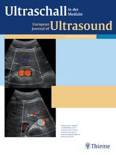
ULTRASCHALL IN DER MEDIZIN
Exploring Innovations in Medical ImagingULTRASCHALL IN DER MEDIZIN is a leading peer-reviewed journal published by GEORG THIEME VERLAG KG, focusing on advancements in the field of ultrasonography and its applications in medicine. With its strong presence in Germany, this journal has been instrumental in disseminating significant research findings since its inception in 1980, and it continues to be relevant through 2024. Recognized for its impact within the academic community, it holds a Q2 ranking in both Medicine (miscellaneous) and Radiology, Nuclear Medicine and Imaging, placing it in the top 25% of journals in these categories. The journal's Scopus rank of #84 out of 333 in its field further emphasizes its importance, reflecting the high-quality research it publishes. While it operates under traditional access options, ULTRASCHALL IN DER MEDIZIN remains a vital resource for researchers, healthcare professionals, and students aiming to stay updated on the latest ultrasonographic techniques and innovations that enhance patient care.

Ultrasound
Transforming Healthcare with Cutting-Edge UltrasoundUltrasound is a renowned journal published by SAGE Publications Ltd, dedicated to the dynamic field of radiology and ultrasound technology. Established in 1993, this pivotal journal serves as a crucial platform for the dissemination of cutting-edge research and clinical advances, covering a range of topics from diagnostic ultrasound techniques to innovative imaging protocols. With an ISSN of 1742-271X and an E-ISSN of 1743-1344, it significantly contributes to the scholarly conversation within the field, highlighted by its Q3 rankings in both Radiological and Ultrasound Technology and Radiology, Nuclear Medicine, and Imaging categories for 2023. Although it operates under a subscription model, the journal is essential for researchers, professionals, and students seeking to stay informed about advancements and trends in ultrasound applications. Located in the United Kingdom, this journal emphasizes the importance of high-quality imaging practices and their implications in modern medicine, making it a vital resource for the ongoing education and advancement of its readership.
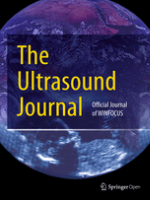
Ultrasound Journal
Elevating Diagnostic Imaging with Cutting-Edge InsightsUltrasound Journal, published by Springer, stands as a premier platform for disseminating cutting-edge research in the fields of radiology and ultrasound technology. Since its inception, this reputable journal has embraced Open Access principles, making significant contributions to the global exchange of knowledge since 2012. With an impressive Q1 ranking in both Radiological and Ultrasound Technology and Radiology, Nuclear Medicine and Imaging, it holds a notable position at the intersection of healthcare and technological advancement, reflecting its impact in the rapidly evolving medical landscape. The journal is recognized within the Scopus database, ranking 14th out of 47 in the health professions category, placing it in the 71st percentile overall. Addressed in the United Kingdom with a focus on rigorous peer-reviewed articles, the Ultrasound Journal seeks to unite researchers, practitioners, and scholars dedicated to improving diagnostic imaging and patient care through innovative ultrasound research and applications. For those who aim to stay at the forefront of this dynamic field, the Ultrasound Journal is an indispensable resource.
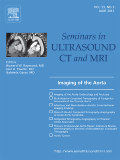
SEMINARS IN ULTRASOUND CT AND MRI
Elevating Standards in Ultrasound and ImagingSEMINARS IN ULTRASOUND CT AND MRI is a prestigious academic journal dedicated to advancing the fields of radiology, nuclear medicine, and imaging. Published by W B SAUNDERS CO-ELSEVIER INC, this journal has been a cornerstone of scholarly communication since 1984, providing a platform for high-quality research and review articles that enhance the understanding of diagnostic imaging techniques. With a current impact factor reflected in its Q3 quartile ranking among 333 journals in its category, it remains a valuable resource for researchers and clinicians alike. The journal's focus includes but is not limited to innovations in ultrasound, computed tomography, and magnetic resonance imaging, making it essential for professionals looking to stay at the forefront of imaging science. While it operates under a subscription model, its extensive archive of influential articles ensures ongoing access to critical knowledge and developments in the field. With a commitment to quality and relevance, SEMINARS IN ULTRASOUND CT AND MRI continues to contribute significantly to the evolving landscape of medical imaging.
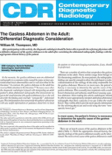
Contemporary Diagnostic Radiology
Exploring the Future of Imaging TechniquesContemporary Diagnostic Radiology is a pivotal journal in the field of medical imaging and radiology, published by Lippincott Williams & Wilkins. With an ISSN of 0149-9009 and an E-ISSN of 1938-1395, this journal serves as an essential platform for disseminating high-quality research and advances in diagnostic radiology and related disciplines. While it is categorized in the lower quartiles (Q4) for its performance in the 2023 rankings in both Neurology, Radiology, Nuclear Medicine and Imaging, and Surgery, its focus on emerging technologies and methodologies in imaging continues to provide valuable insights for practitioners and researchers alike. The journal’s scope includes innovative diagnostic tools, imaging techniques, and case studies, fostering collaboration and knowledge sharing in the medical community. Although it does not offer open access options, its commitment to contributing to the ongoing dialogue in clinical imaging is undisputed, making it an essential resource for professionals seeking to stay abreast of current trends and research in the rapidly evolving landscape of diagnostic radiology.
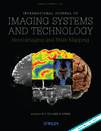
INTERNATIONAL JOURNAL OF IMAGING SYSTEMS AND TECHNOLOGY
Innovating the Landscape of Imaging SystemsINTERNATIONAL JOURNAL OF IMAGING SYSTEMS AND TECHNOLOGY, published by Wiley, is a leading journal dedicated to advancing the field of imaging systems and technologies. With an ISSN of 0899-9457 and E-ISSN 1098-1098, this esteemed journal offers a platform for high-quality research spanning essential interdisciplinary areas, including Biomedical Engineering, Computer Science, and Health Informatics. Recognized for its impactful contributions, it holds a commendable position in the Q2 quartile across multiple categories as of 2023. The journal boasts an excellent Scopus ranking, with notable acknowledgments like rank #49 out of 333 in Radiology, Nuclear Medicine, and Imaging, showcasing its relevance and importance in the academic community. Publishes annually from 1989 to 2024, it aims to bridge gaps in knowledge and foster innovative developments through rigorous peer-reviewed articles. Though it operates under a traditional access model, the journal maintains an accessible repository of cutting-edge research, making it indispensable for researchers, professionals, and students alike seeking to stay at the forefront of imaging technology advancements.

Cardiovascular Ultrasound
Advancing cardiovascular imaging through innovative ultrasound research.Cardiovascular Ultrasound, published by BMC, is a leading open-access journal dedicated to advancing the field of cardiovascular imaging through ultrasound techniques. Since its inception in 2003, this esteemed journal has provided a platform for high-quality research and innovative methodologies, contributing significantly to both cardiology and radiology. With an impressive impact in the academic community, it consistently ranks in the Q2 category for Cardiology and Cardiovascular Medicine, as well as in Medicine (Miscellaneous) and Radiology, Nuclear Medicine, and Imaging, as per the 2023 metrics. The journal aims to disseminate critical knowledge that enhances diagnostic practices, patient care, and clinical outcomes, making it an essential resource for researchers, clinicians, and students. Emphasizing the importance of accessible knowledge, Cardiovascular Ultrasound ensures that all published articles are freely available, fostering collaboration and innovation across the global community of cardiovascular professionals.
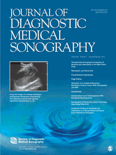
JOURNAL OF DIAGNOSTIC MEDICAL SONOGRAPHY
Transforming Knowledge into Diagnostic PrecisionJOURNAL OF DIAGNOSTIC MEDICAL SONOGRAPHY, published by SAGE PUBLICATIONS INC, is a critical platform for researchers, clinicians, and students in the field of sonography, offering insights and advancements in diagnostic imaging practices since its inception in 1985. With ISSN 8756-4793 and E-ISSN 1552-5430, this journal serves as a comprehensive resource addressing the latest trends, techniques, and technologies in radiological and ultrasound practices, despite being indexed in the lower quartiles yet maintaining a niche audience passionate about the evolution of sonographic methodologies. The journal's ongoing commitment to publishing high-quality research contributes significantly to its ranking within the competitive spheres of Radiology, Nuclear Medicine and Imaging and Radiological and Ultrasound Technology. As the field evolves, this journal aims to inspire dialogue, promote evidence-based practices, and enhance education among professionals dedicated to improving diagnostic accuracy and patient care in ultrasound technology.
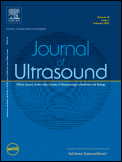
Journal of Ultrasound
Enhancing patient outcomes through ultrasound advancements.Journal of Ultrasound, published by SPRINGER INT PUBL AG, serves as a critical platform for disseminating innovative research and advancements in the field of ultrasound technology and its applications in medicine. With an ISSN of 1971-3495 and an E-ISSN of 1876-7931, this esteemed journal has gained recognition for its contribution to Internal Medicine, Radiology, and Medicine (miscellaneous), consistently ranking in Q3 quartile across these categories. The journal addresses research from its converged years spanning from 2007 to 2024 and holds a Scopus ranking that places it within the 55th to 59th percentile range among its peers. Although not open access, the journal offers a valuable repository of knowledge for researchers, healthcare professionals, and students seeking to enhance their understanding of ultrasound practices and technologies. Based in Switzerland, the Journal of Ultrasound aims to foster collaboration and spark discussions that advance the field and improve patient outcomes through innovative ultrasound methodologies.

Indian Journal of Radiology and Imaging
Innovative Insights in Imaging and Nuclear MedicineThe Indian Journal of Radiology and Imaging, published by THIEME MEDICAL PUBL INC, is a prominent open-access journal in the field of radiology, nuclear medicine, and imaging. Since its inception in 1984, the journal has provided a platform for researchers, professionals, and students to disseminate innovative research and findings in diagnostic imaging. With a growing impact factor and categorized in the Q3 quartile according to the 2023 rankings, it ranks among the notable journals in its field, although it currently stands at Rank #244 out of 333 within Scopus, reflecting its competitive position in radiology research. The journal, accessible to a global audience since 1999, aims to advance the knowledge and practice in imaging by inviting diverse contributions, including original research articles, reviews, and case reports. Its commitment to open-access publication fosters wider dissemination and collaborative discourse, crucial for the dynamic landscape of medical imaging.